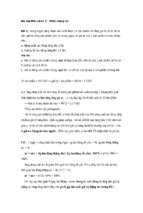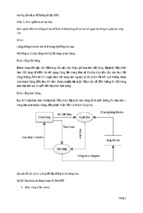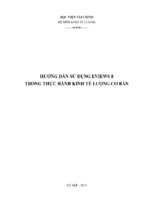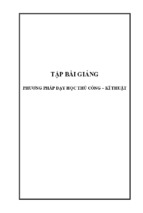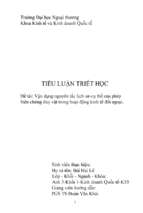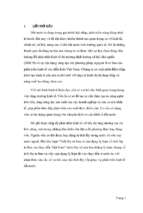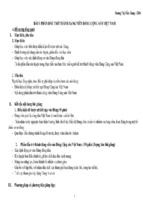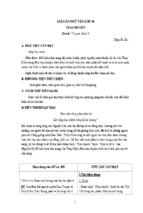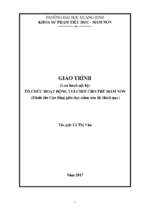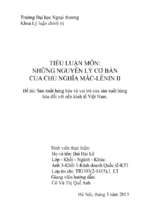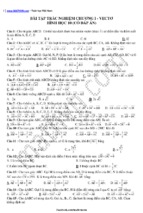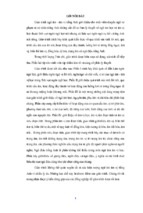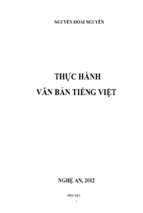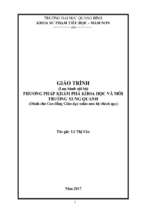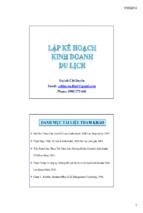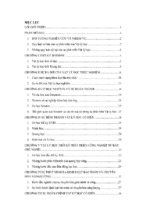Nguyên tắc thanh tra cơ sở chế biến thực phẩm
Attachmen
Principles for the inspection of food businesses
Implementation Subcommittee for Food Regulation
March 2015
Disclaimer
The information presented here is distributed by ISFR for and on behalf of FRSC and
is presented as an information source only.
The information is provided solely on the basis that readers will be responsible for
making their own assessment of the matters presented herein and are advised to
verify all relevant representations, statements and information. The information does
not constitute legal or professional advice and should not be relied upon as such.
Formal advice from appropriate advisers should be sought in particular matters.
ISFR does not accept liability to any person for the information or advice provided in
the document, or incorporated into it by reference or for loss or damages incurred as
a result of reliance upon the material contained herein. In no event shall ISFR be
liable (including liability for negligence) for any damages (including without limitation,
direct, indirect, punitive, special or consequential) whatsoever arising out of a
person’s use of, access to or inability to use or access the document.
Attachmen
Introduction
This document has been developed by the Implementation Subcommittee for Food
Regulation (ISFR) to provide authorised officers, including local government
environmental health officers (EHOs), with principles to guide the inspection of food
businesses. Inspection of food premises is an important activity to assess
compliance with the Australia New Zealand Food Standards Code (the Code) and
food act provisions.
ISFR is made up of representatives from government agencies and departments in
Australia and New Zealand that are responsible for monitoring the implementation of
food laws and enforcing those laws. These agencies and departments work together
through ISFR to ensure food laws are implemented and enforced consistently.
Scope
An inspection is undertaken to assess the ability of a food business to manage food
safety risks and comply with the relevant food safety standards. Inspections
incorporate a planned sequence of observations, measurements and information
gathering to collect factual evidence to support findings and justify actions. This
document is targeted to the inspection of a food business for compliance with
Chapter 3 of the Code, but could also be applied to inspections conducted to assess
compliance with other chapters of the Code.
Principles
The primary responsibility for identifying food hazards and controlling risks rests with
food businesses. An inspection of a food business is undertaken in order to assess
and monitor compliance with the food safety standards of the Code and identify any
corrective action that should be taken to minimise risk to public health and safety.
The following principles should apply to all inspections of food businesses.
Purpose of an inspection
Authorised officers inspect food businesses in order to assess compliance with food
safety standards of the Code. During an inspection, the authorised officer should
check:
• whether food is being handled in a safe and suitable manner;
• whether the food premises design and construction or fixtures, fittings and
equipment may contribute to a potential risk to public health and safety;
• whether food that is handled presents a risk, having regard to further
processing; and
• whether there is a risk of foreseeable occurrences of foodborne illness as a
consequence of food consumption.
Risk-based approach
A risk-based approach should underpin all aspects of the food premises inspection.
The nature and frequency of inspections are determined based on the food safety
risk associated with the food business.
Attachmen
The risk should be determined using the Risk Profiling Framework 1 (the nationallyagreed tool for government to classify a food business type on the basis of food
safety risk), or alternatively, a specific risk classification framework determined in the
relevant jurisdiction. A four-tier classification (Priority 1 to Priority 4) is used in the
Risk Profiling Framework with Priority 1 food businesses being characterised by the
highest level of inherent risk.
Initially, the risk classification of a food business is used to determine the frequency
of inspections. Subsequently, a combination of the risk classification and the
outcomes of compliance assessments for the food business should be used to
determine the ongoing frequency of inspections. Elements of a food business
considered to be high risk should be assessed at each inspection (e.g. temperature
control).
The Hazard Analysis and Critical Control Point System (HACCP) 2 can be applied to
the inspection and assessment of any food business. HACCP systematically
identifies critical control points that impact on risk factors for foodborne illness and
allows for evaluation of food processing and management controls.
Key steps involved in undertaking an inspection of a food business
The following steps guide the inspection and compliance assessment of food
businesses.
1. Preparation
An understanding of the foods handled by the food business, the processes involved
and the timing of these processes will enable the inspection to be scheduled so that
the authorised officer can observe and assess these processes. The inspection
priorities should be established and the timing and duration of the visit planned,
including whether an announced or unannounced inspection is appropriate.
The compliance history of the business should be investigated and appropriate
documentation collected prior to conducting the inspection, including:
• current registration status;
• risk classification and any minimum requirements associated with this
classification;
• previous compliance reports, including any outstanding compliance issues
and any written correspondence; and
• any recent consumer complaints, recalls or food analysis results.
Authorised officers should ensure that they have all the equipment required to
undertake the inspection, for example, calibrated thermometer, material for recording
information, camera and sample collection containers.
1
Ross,T et al (2007) Risk Profiling Framework
Hazard Analysis and Critical Control Point (HACCP) System and Guidelines for its Application Issued by the Codex
Alimentarius Commission.
2
Attachmen
Before undertaking an inspection, there should be an assessment of the business
proprietor's understanding of English. If there is a possibility that communication
could be an issue, appropriate steps should be taken to overcome this.
2. Conducting the inspection and collecting evidence
The inspection should focus on the assessment of potential risk as a result of food
handling operations, rather than compliance with prescriptive requirements.
Inspection procedures and protocols should be transparent to ensure accountability
and ensure expectations for the food business are clear. Establishing an open
dialogue with the food business proprietor or manager on arrival at the premises is
an important step in conducting an effective inspection. The purpose and scope of
the inspection should be clearly outlined to the proprietor.
The inspection should be based on HACCP and may involve:
• the use of open questions directed at food handlers, supervisors and
proprietors;
• tracking and observing the managerial controls in place;
• observing the practices and procedures undertaken by the food handlers;
• an assessment of procedures and systems;
• questioning that can assess whether food handlers, supervisors and
proprietors can explain their responsibilities and demonstrate their
understanding of relevant systems and protocols;
• assessing whether the requirements of the food safety standards 3.2.2 –
Food Safety Practices and General Requirements and 3.2.3 – Food Premises
and Equipment of the Code are being met by the food business; and
• an assessment of records and documentation, where available.
Inspections should be conducted so that any evidence collected is sufficient to
support enforcement action.
3. Food safety risk analysis
The data and analysis collected in step two is analysed to determine whether food
safety risks associated with the nature of the food business are being managed
adequately. The food safety practices in place to manage risks for particular foods
that require specific controls (e.g. egg products) should be assessed. The following
food safety support practices should also be assessed to ensure that food safety
controls are not compromised: pest control; availability of suitable thermometers,
chemical storage and usage, equipment cleaning and maintenance and waste
management.
The risk analysis should identify any improvements needed to the critical food safety
controls. The following questions should be addressed:
• Is there an immediate risk to public health?
• Are there any risk factors not controlled for?
Attachmen
•
Do any potential risk factors require attention?
4. Communication
The findings of inspections should be discussed with the food business at the time of
inspection and sufficient information should be provided to ensure there is a clear
understanding of the results. When discussing corrective action, the authorised
officer should focus on the outcome that should be reached rather than being
prescriptive. Timelines for follow up of any corrective action should be discussed and
negotiated. The timelines for corrective action should take into account the risk to
public health, the nature and extent of the problem and the availability and suitability
of solutions to address the problem.
Written communication is important in reinforcing and confirming the verbal
discussion at the time of inspection. Written communication should use language that
is consistent with that used when conducting the inspection and provide a clear
rationale and evidence to support the findings. Any corrective action outlined should
be accompanied by clear timelines, details of the processes used by local
government in relation to any follow up or enforcement action and provide any
guidance material that may be helpful. The templates used by local government to
report to businesses should be helpful, well-structured, easy to read and use clear
language.
5. Recording
Accurate and comprehensive recording of information obtained during the inspection
is important for managing compliance, as a reference for future inspections and for
proceeding with enforcement action. It is recommended that local government
specify what details to record, how to record the information and where the records
are to be kept.
6. Reporting
Depending on the jurisdiction, local government may be required to report an agreed
set of certain food business compliance activities to the relevant food regulatory
authority. ISFR has endorsed annual reporting indicators for local government. The
four parameters that will initially be used are:
•
•
•
•
Number of licensed (or registered, accredited, notified) food businesses;
Total number of inspections (of all risk categories);
Number of complaints received; and
Enforcement action taken (all types).
Attachmen
Supporting material
Supporting materials and education should be provided to food businesses and
authorised officers to assist in the consistent application of these principles for the
inspection of food businesses.
The Australia and New Zealand food regulation enforcement guideline supports a
risk-based approach to compliance and enforcement. The enforcement guideline
advocates the graduated application of enforcement measures against food
businesses, commencing with milder measures such as warnings, which can
progress to more severe measures such as prosecution, should milder measures not
address the issue of concern.
The enforcement toolbox, appended to the enforcement guideline, provides details
on the range of different enforcement tools available and some examples of the
situations in which these would be appropriately employed.
- Xem thêm -


